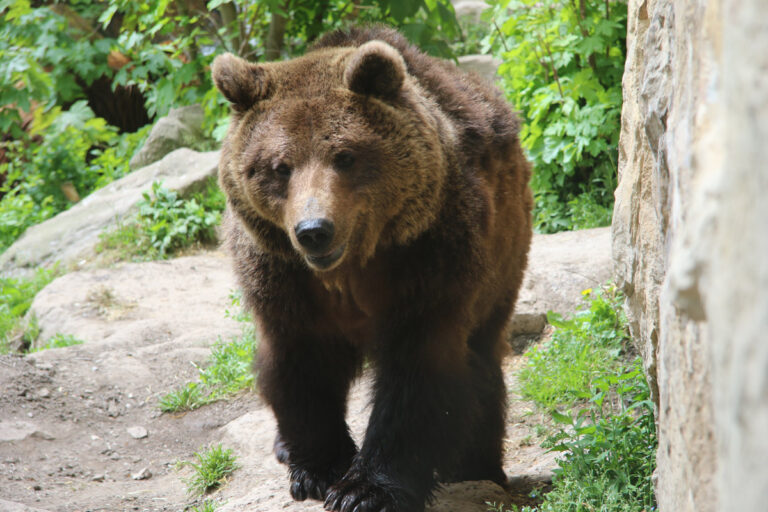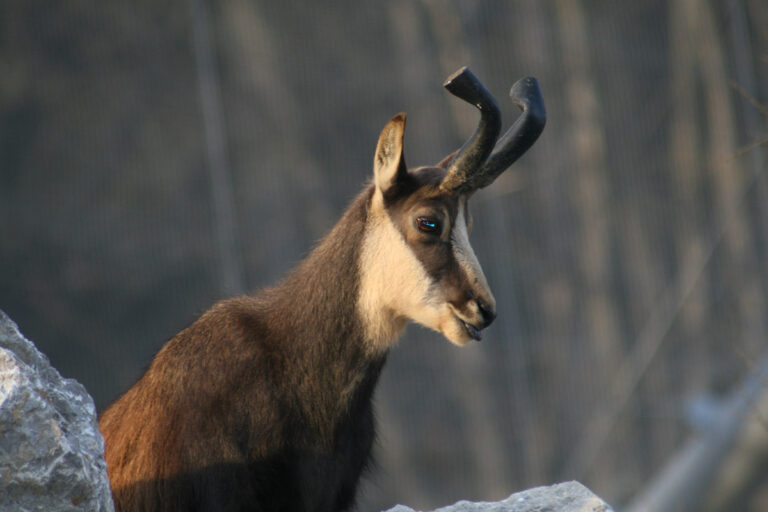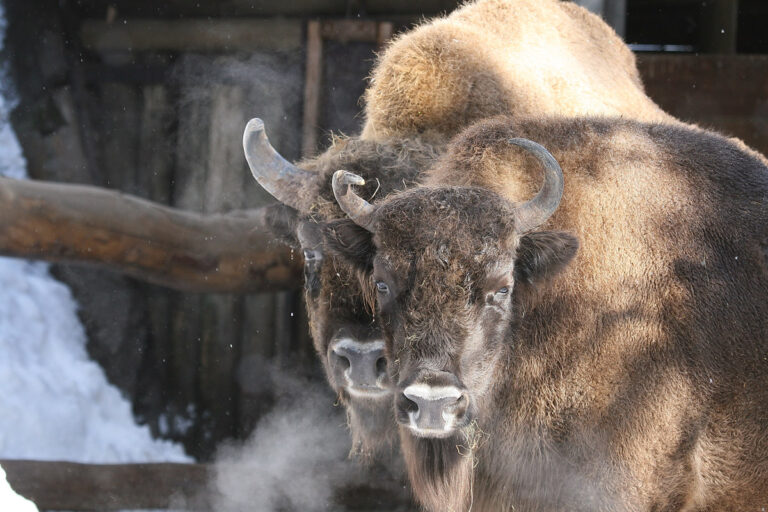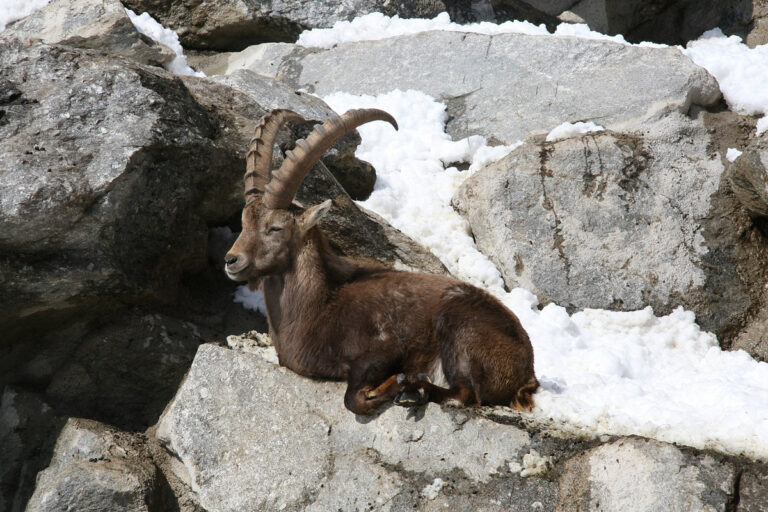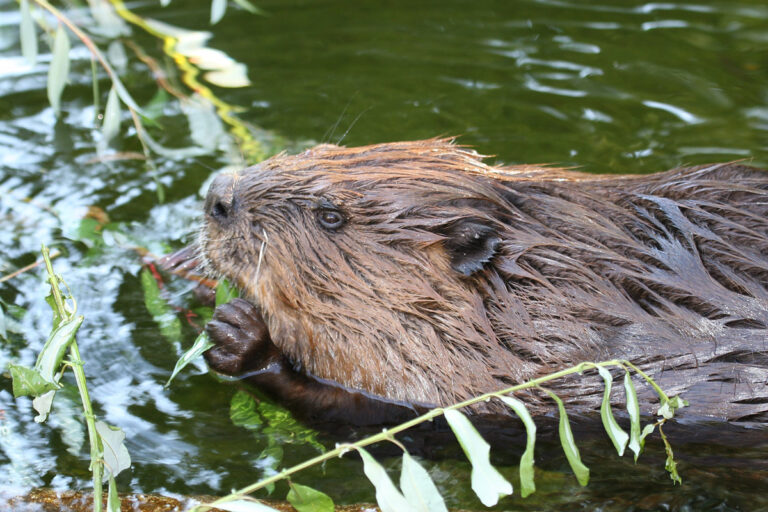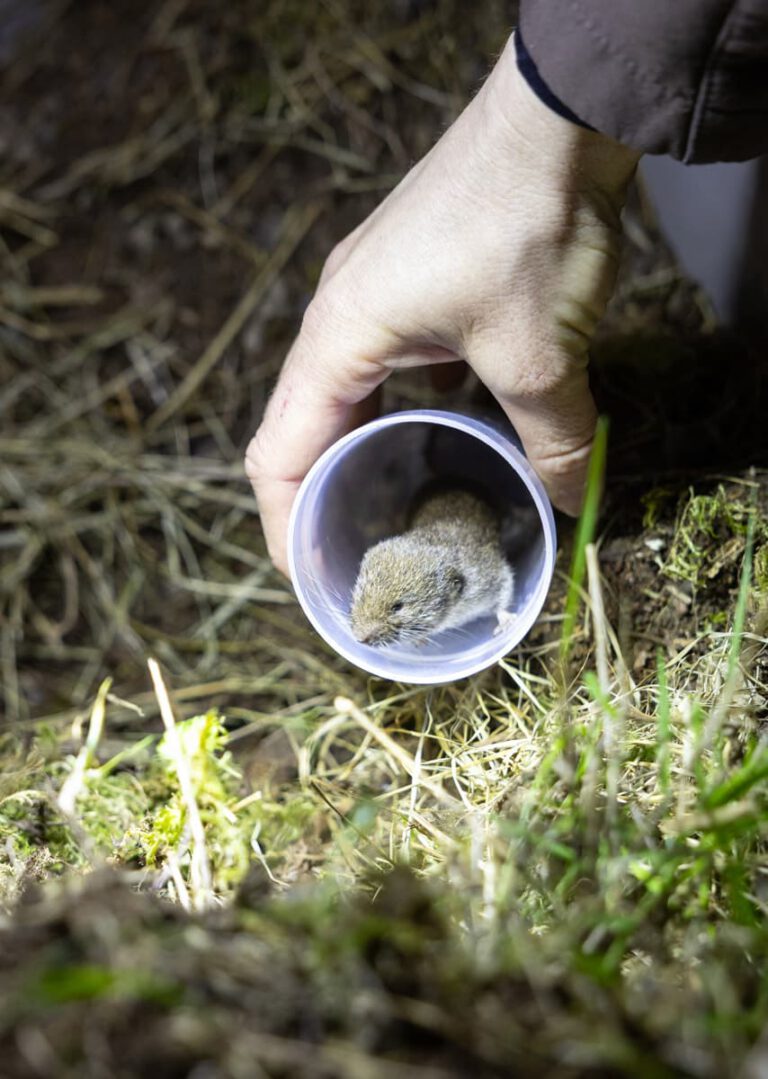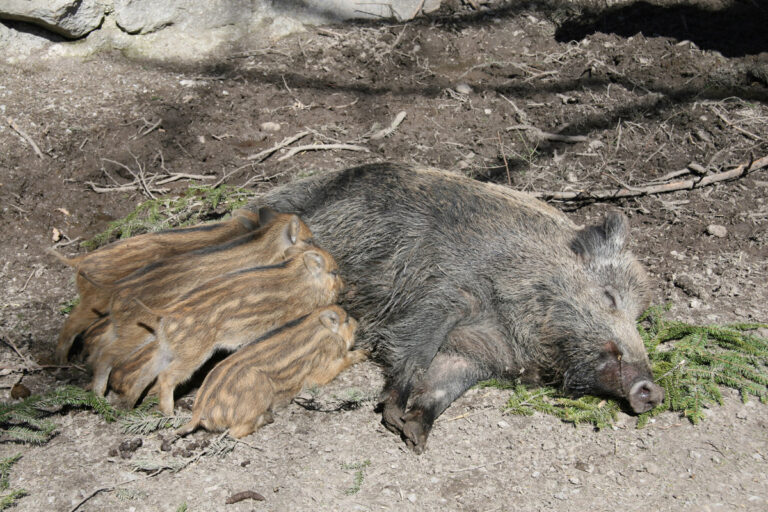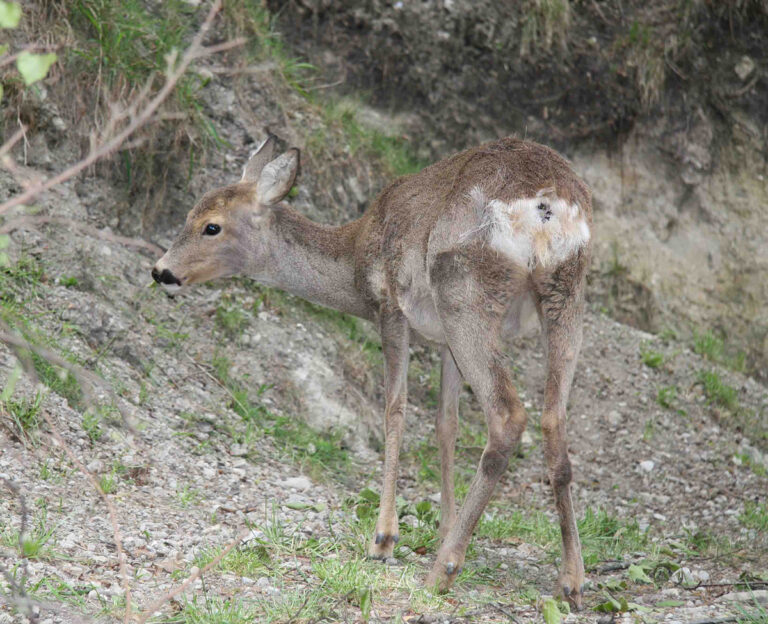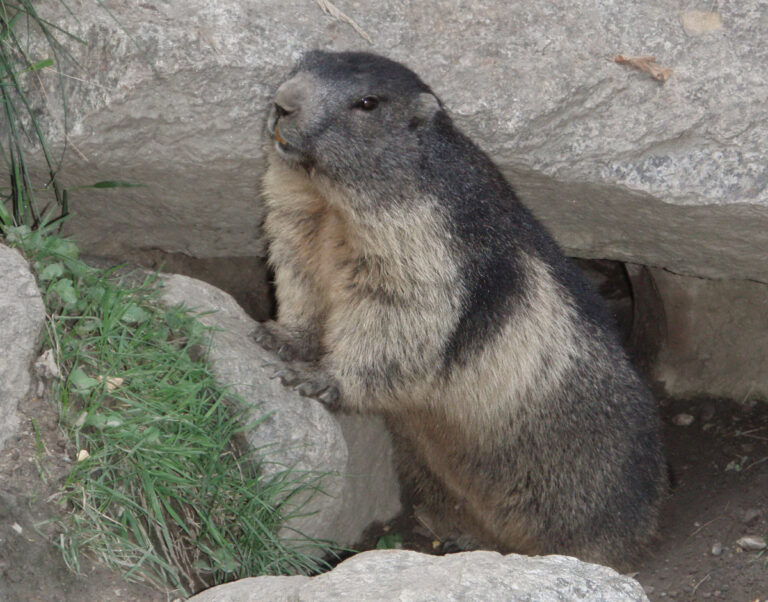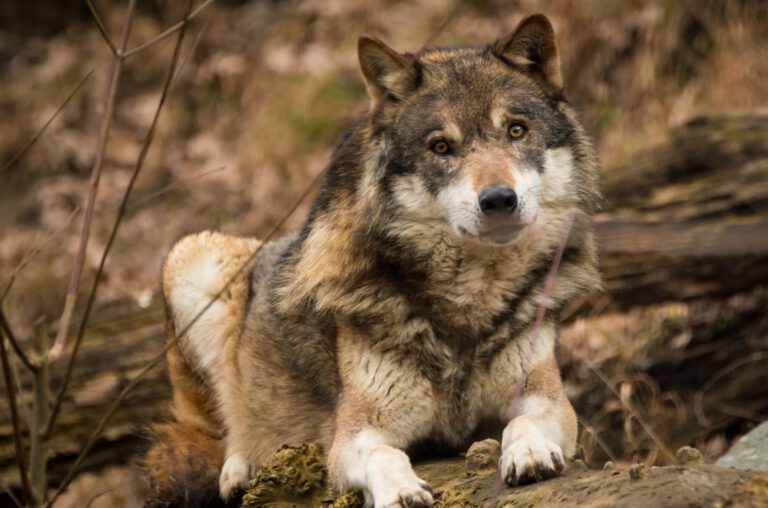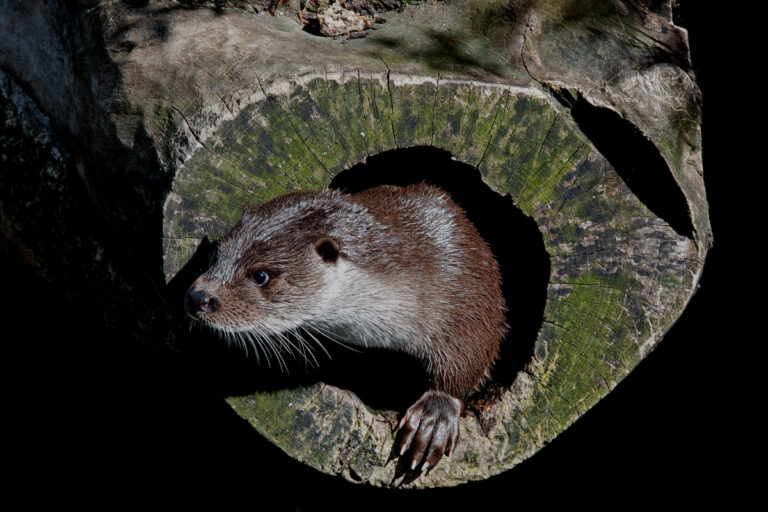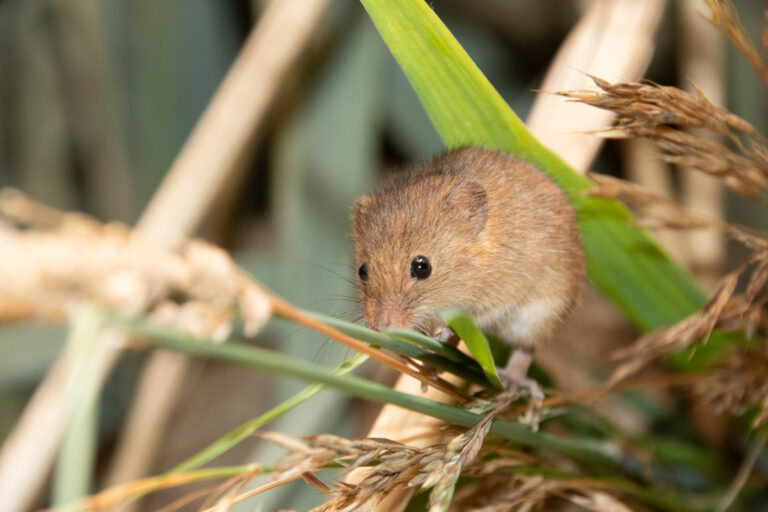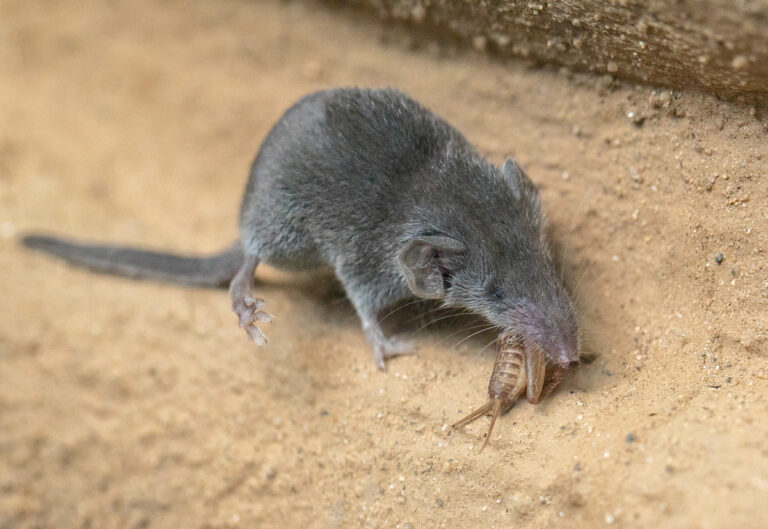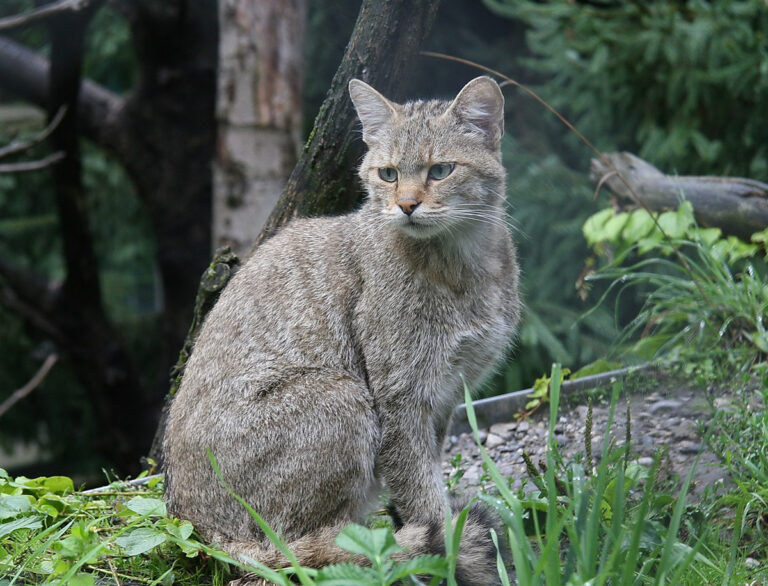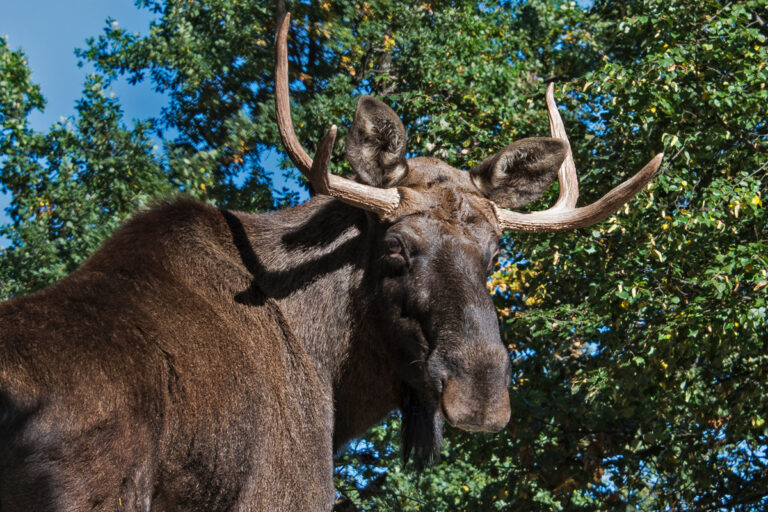Eurasian lynx
Brush ears and stumpy tail make the lynx unmistakable. Light-sensitive eyes and a keen sense of hearing enable them to hunt at dusk and at night. The lynx can recognise a hare at a distance of around 300 metres and a deer at around 500 metres. With its large, snowshoe-like paws, it hardly sinks in even when the snow cover is thick. Roe deer are the lynx's main prey, but it rarely kills sheep in pastures. Its daily food requirement is around 1 - 1.5 kilograms of meat. As a solitary animal, the shy forest dweller needs a territory of around 100 square kilometres. The partners only come together during the mating season at the end of February. This is when the cat's territorial sounds can be heard - even in the Alpine Zoo. At the beginning of the 20th century, the lynx was completely extinct in the Alpine region. Following reintroductions from 1970 in Switzerland, Slovenia and Austria, around 130 lynxes are now living in the Alps again.
- Lynx have tufted ears and facial whiskers. This increases their ability to hear sound and gives them an even more precise sense of hearing.
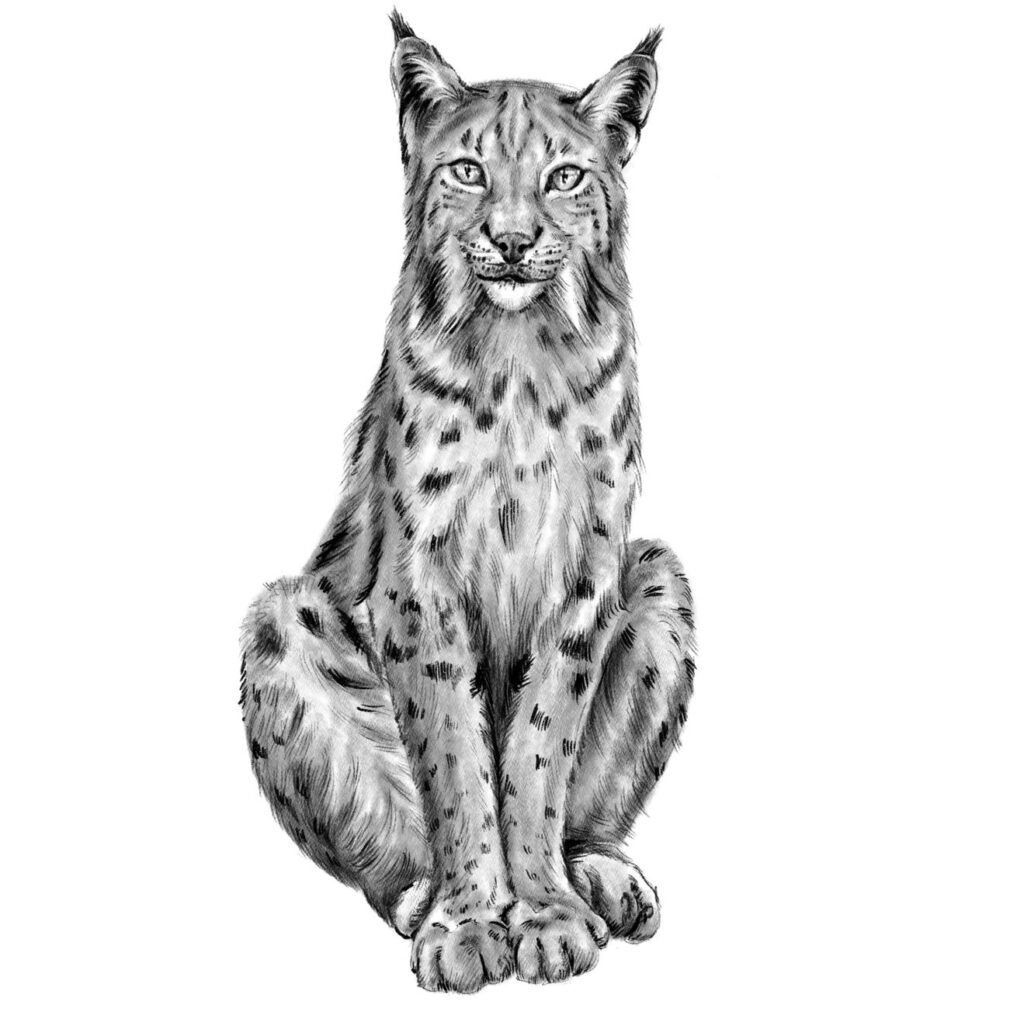
LATIN NAME
Lynx lynx
AGE
- up to 10 years
FOOD
- Even-toed ungulates
- Small mammals
FINE
- Wolf
- Brown bear
WEIGHT
- up to 35 kg
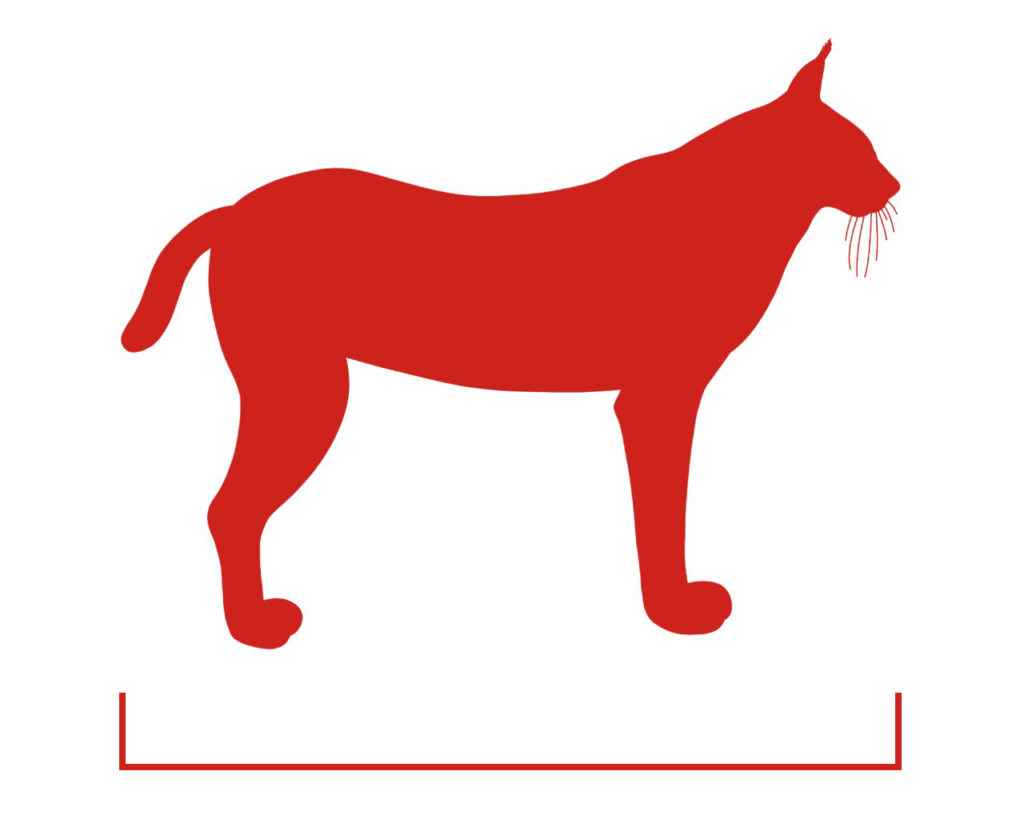
OTHER MAMMALS
We look forward to seeing you
Experience a fascinating world full of adventure and amazing animal encounters. Plan your visit to the zoo now and immerse yourself in the heart of nature!

